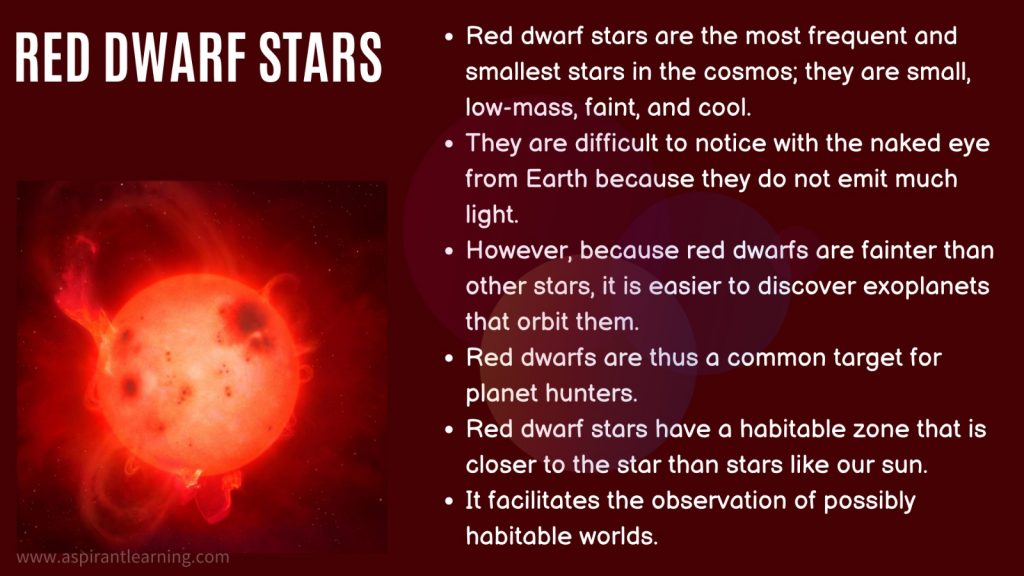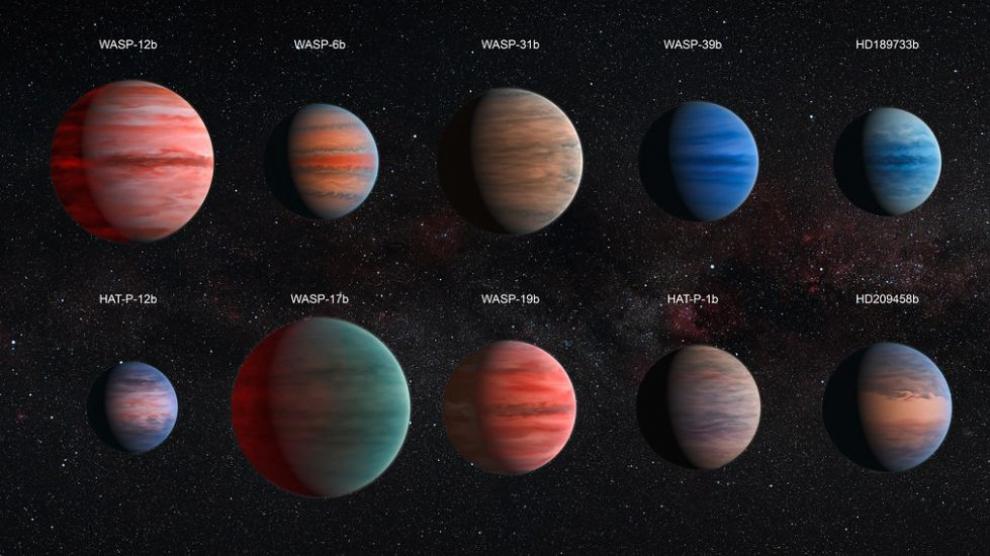News Highlight
An alien world called YZ Ceti b has suddenly become the cynosure of astronomers.
Key Takeaway
- Cetus, a constellation accessible to the unassisted eye in the evening sky this October, can be seen far above the horizon.
- You’d also be looking in the general direction of YZ Ceti b, an extraterrestrial world that has recently been the cynosure of astronomers.
- YZ Ceti b is a rocky, Earth-sized exoplanet orbiting the tiny red dwarf star YZ Ceti.
- It is only 12 light-years away from Earth or a handshake in astronomical terms.
- Astronomers are ecstatic after discovering a repeated radio signal from this exoplanet.
- It implies the presence of a magnetic field around it, which is one of the requirements for a habitable planet.
YZ Ceti b
- About
- It is a rocky, Earth-sized exoplanet that orbits a tiny red dwarf star 12 light-years away.
- A periodic radio signal from this exoplanet has been recorded by astronomers, indicating the presence of a magnetic field around it.
- One of the requirements for a livable planet is a magnetic field.
- The planet’s orbit around its star takes only a few Earth days, according to researchers.
- The finding of YZ Ceti b was made possible by the Karl G. Jansky Very Large Array radio telescope in New Mexico.
- Star-Planet pair
- A planet must be at a specific distance from its star (Goldilocks zone) to have an atmosphere and support water, or it will be burned.
Exoplanets
- About
- Exoplanets are planets that orbit stars other than our sun and are outside of our solar system.
- The first confirmation of exoplanet identification occurred in 1992.
- According to NASA, approximately 5,000 exoplanets have been identified to date.
- According to scientists, there are more planets than stars since each star has at least one world surrounding it.
- Exoplanets exist in a variety of sizes.
- They can be as large as Jupiter’s gas giants or as small and rocky as Earth.
- They are also known to have a range of temperatures ranging from blazing hot to cold.
- Discovery
- Exoplanets are extremely difficult to observe directly using telescopes.
- The dazzling glare of the stars they orbit obscures them.
- As a result, astronomers hunt for and study exoplanets in different ways, such as observing the effects these planets have on the stars they circle.
- Indirect approaches, such as the transit method, are used by scientists.
- It measures the dimming of a star caused by a planet passing in front of it.
- Other detection methods include gravitational microlensing.
- It involves bending and focusing light from a distant star as a planet passes between the star and Earth.
- A similar technology could detect exoplanets around our Sun.
- Significance
- Exoplanet research not only broadens our study of other solar systems.
- It also assists us in piecing together information about our planetary system and its genesis.
- The most compelling reason to learn about them is to discover the solution to one of humanity’s most profound and thought-provoking concerns.
- Another critical aspect of the research is determining the distance between an exoplanet and its host star.
- This assists scientists in determining whether or not a discovered world is habitable.
- When an exoplanet gets too close to a star, it may become too hot to support liquid water.
- If it is too far away, it may just have frozen water.
- A planet is believed to be at a distance that allows it to contain liquid water.
Transit Method of Exoplanet Detection
- A transit occurs when a planet passes before its star.
- When a planet passes in front of its star, a little portion of the star’s light is obscured.
- As a result, the star’s brilliance will be reduced.
- Astronomers can detect changes in the brightness of a star, which aids in determining the size of a planet.
- Astronomers can calculate the distance between the transits of an exoplanet and its star.

Pic Courtesy: 20Minutos
Content Source: The Hindu



